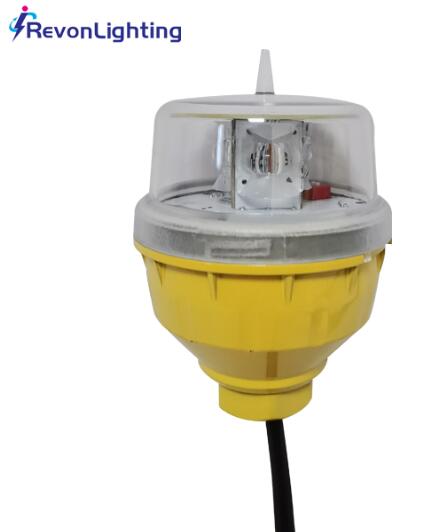Posted: 2024-05-30
Low-intensity obstruction lights play a crucial role in ensuring aviation safety. These lights are specifically designed to mark structures and obstacles, such as buildings, wind turbines, and communication towers, that may pose a hazard to aircraft during takeoff, landing, or aerial navigation. This article explores the significance, features, benefits, and advancements of low-intensity obstruction lights, highlighting their pivotal role in enhancing aviation safety.
The Significance of Low-Intensity Obstruction Lights:
Low-intensity obstruction lights serve as essential visual aids for pilots, providing clear indications of potential hazards in the flight path. These lights are typically installed on tall structures to ensure their visibility from the air. By marking these structures with low-intensity obstruction lights, pilots can easily identify and avoid potential dangers, minimizing the risk of accidents and collisions.
Features of Low-Intensity Obstruction Lights:
a) Compliance with Aviation Regulations:
Low-intensity obstruction lights are designed and tested to meet the stringent standards set by aviation regulatory bodies. They comply with guidelines for light intensity, color, and synchronization, ensuring consistency and effectiveness in their signaling.
b) LED Technology:
These lights are equipped with energy-efficient LED technology, offering long-lasting illumination while consuming minimal power. LED lights also provide enhanced visibility, with options for different flash patterns and intensity levels, ensuring clear and conspicuous marking of obstacles.
c) Robust Construction:
Low-intensity obstruction lights are built to withstand harsh environmental conditions, including extreme temperatures, high winds, and corrosive elements. They are typically constructed with durable materials such as aluminum or polycarbonate, ensuring long-term reliability and functionality.
d) Monitoring and Control:
Many low-intensity obstruction lights feature advanced monitoring and control systems. These systems allow for remote monitoring of light status, automatic fault detection, and the ability to adjust light settings as needed. This ensures that the lights are functioning correctly and minimizes the need for manual intervention.

Benefits of Low-Intensity Obstruction Lights:
a) Enhanced Aviation Safety:
By marking structures and obstacles with low-intensity obstruction lights, pilots can easily identify potential hazards and navigate safely. These lights play a crucial role in minimizing the risk of accidents and collisions, especially during low-visibility conditions or night flights.
b) Regulatory Compliance:
Installing and maintaining low-intensity obstruction lights helps organizations and individuals comply with aviation regulations. By demonstrating their commitment to aviation safety and adhering to the guidelines set by regulatory bodies, stakeholders contribute to a safer aviation environment.
c) Cost Efficiency:
LED technology and energy-efficient designs reduce power consumption, resulting in lower operational costs. The long lifespan of LED lights minimizes the need for frequent maintenance and replacement, further contributing to cost savings.
d) Environmental Sustainability:
LED technology significantly reduces energy consumption and carbon emissions compared to traditional lighting options. This eco-friendly feature aligns with the aviation industry's commitment to sustainability and the reduction of its environmental footprint.
Advancements in Low-Intensity Obstruction Lights:
Continual technological advancements have led to significant improvements in low-intensity obstruction lights. These advancements include:
a) Wireless Connectivity:
Many low-intensity obstruction lights now feature wireless connectivity, allowing for remote monitoring, control, and fault detection. This capability streamlines maintenance and improves overall operational efficiency.
b) Smart Lighting Systems:
Advanced systems integrate sensors and weather monitoring capabilities with obstruction lights. These systems can automatically adjust light intensity, flash patterns, and synchronization based on weather conditions such as fog, rain, or low visibility, further enhancing aviation safety.
Conclusion:
Low-intensity obstruction lights are indispensable tools for ensuring aviation safety. Their compliance with regulations, LED technology, durability, and advanced features make them essential for marking structures and hazards. By embracing these lights and prioritizing their installation and maintenance, the aviation industry can ensure safer and more efficient flights for pilots and passengers alike.